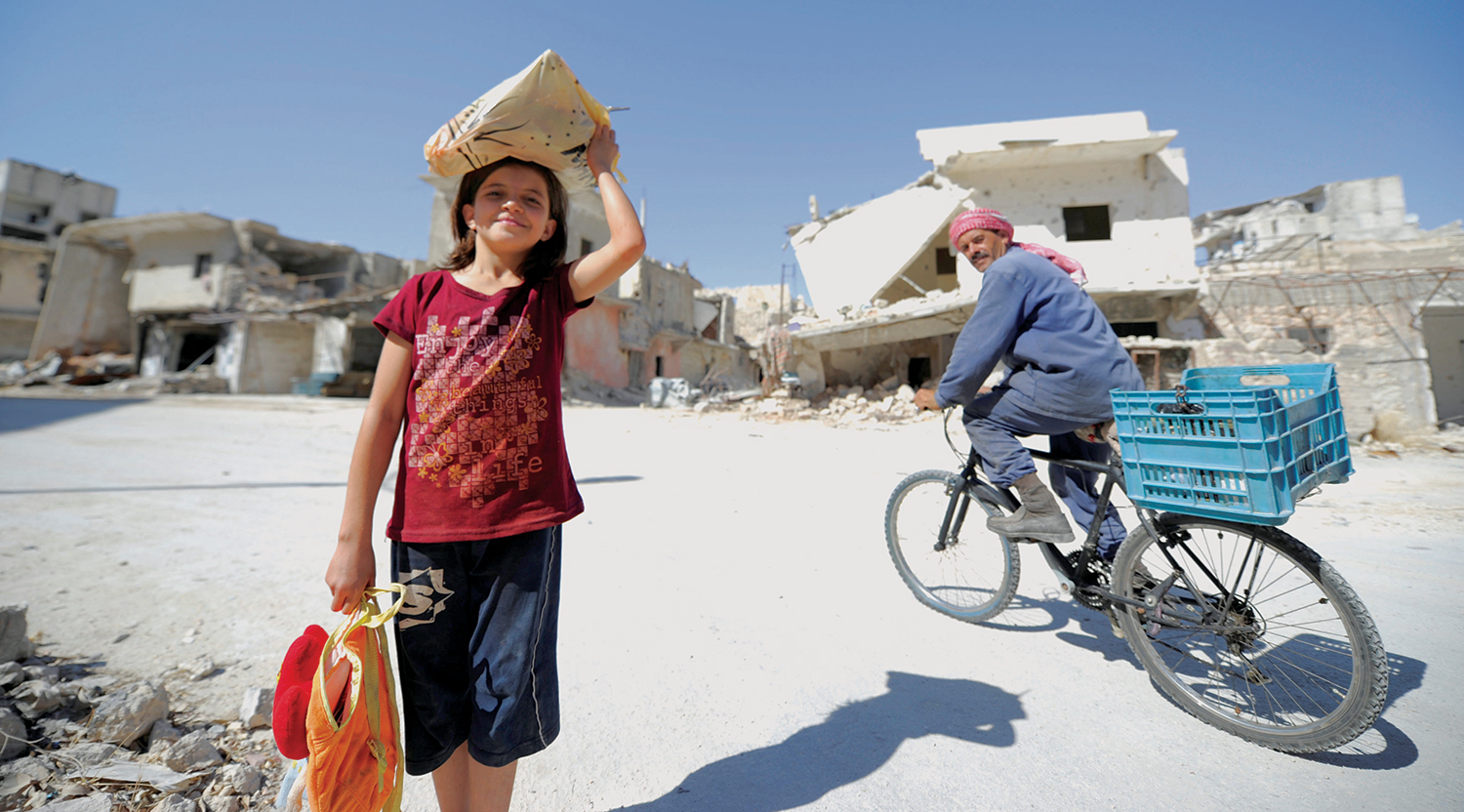

Kurdish fighters wearing the blue eagle insignia of the Asayish security force stopped the taxi entering the Sheikh Maqsoud district in Aleppo, checking papers and searching for contraband.
When they waved it on into the Kurdish-controlled district, it stayed inside the city while leaving, in effect, the Syrian Arab Republic of President Bashar al Assad.
Inside Sheikh Maqsoud, Kurdish banners flutter from the rooftops and Assad’s image is replaced by that of a Kurdish leader.
“We won’t give up Sheikh Maqsoud unless they kill us all,” said Souad Hassan, a senior Kurdish politician.
That the government tolerates Kurdish rule in the enclave, generally allowing movement in and out, shows its willingness to accept, for now, a Kurdish movement whose vision for Syria directly rivals its own, but which is not an immediate enemy.
But friction between Sheikh Maqsoud — population 40,000 — and the government points to potential future problems.
It is an uneasy relationship, complicated by a web of international alliances and enmities, that will grow more important as both sides seize more ground from IS.
Assad’s government trumpeted the defeat of rebels in Aleppo as his greatest victory of the war so far, the return of state control to a city that was once the country’s biggest.
But he has made no move to regain Sheikh Maqsoud, which sits on a hilltop surrounded by areas held by the army. There is no military presence around the district except a Syrian army checkpoint on the road in.
Many government workers and students inside Sheikh Maqsoud commute daily into the city.
Still, Asayish leaders there complained that government checkpoints hinder the movement of goods and services into Sheikh Maqsoud.
In an upstairs room of the local “Democratic Community Academy”, 15 men and women, note pads and pens on their laps, attended a lecture on the YPG’s leftist, federalist ideology.
Street posters of martyrs included not just those killed with the YPG in Syria, but some who had died fighting for the PKK in Turkey.
Those ties to the PKK alarm Turkish President Tayyip Erdogan, whose intervention in Syria is based partly on stopping a Kurdish mini-state emerging along the border.
They have also complicated the YPG’s relationship with the United States, which backs it as the spearhead of its fight against IS in Syria, but which regards the PKK as a terrorist organisation. — Reuters
Oman Observer is now on the WhatsApp channel. Click here



